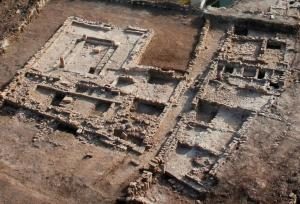
Located on the western shore of the Sea of Galilee (known as Lake Kinneret in Israel), the site of an ancient Jewish village identified as Magdala (or Migdal) is currently undergoing intensive investigation and excavation by a team of archaeologists. What they are finding promises to shed new light on a pivotal time and place in both Jewish and Christian history—in a region that hosted the simple, peaceful lives of quiet Jewish communities, yet at the same time broiled with new religious ideas and conflict, witnessing the wrath of a Roman Empire bent on quelling a major revolt.
Although the first excavations were carried out in the early twentieth century, and again in 2002 and 2006, the most recent news-making excavations began in 2009 when excavators came across the remains of a 1st century synagogue only 30 cm beneath the surface during what was a salvage excavation related to construction of a pilgrimage and holiday visitor complex. Led by Dina Avshalom-Gorni and Arfan Najar of the Israel Antiquities Authority, they eventually uncovered (among other things) the well-preserved remains of an entrance hall/study room, a chamber for storing Torah scrolls, and a large decorated stone, now popularly known as the ‘Magdala Stone’, in the center of the structure. The decorated stone, interpreted as a prayer table or altar, is particularly significant in that it featured clear images of objects or symbols associated with the time of the Second Temple, the great temple that stood during the time of Herodian rule. These images included a seven-branch menorah, rosette, and fiery wheels. The menorah image is thought to be the oldest known depiction of the menorah, at least outside of Jerusalem, as it appeared in the Temple. “We can assume that the engraving which appears on the stone, which the Antiquities Authority uncovered, was done by an artist who saw the seven-branched menorah with his own eyes in the Temple in Jerusalem,” commented Avshalom-Gorni to the Jerusalem Post (1). Finds uncovered within the synagogue remains, including a coin minted in Tiberias in 29 CE, helped to date the structure to the first century CE, the time of Jesus’ ministry. Given the Christian New Testament references to Jesus visiting synagogues throughout the Galilee region, archaeologists suggest that the synagogue was likely a place where Jesus taught. And given the dating, the synagogue is thus also believed to have been in use when Josephus commanded rebel forces against the Romans during the First Jewish Revolt.
_______________________________________
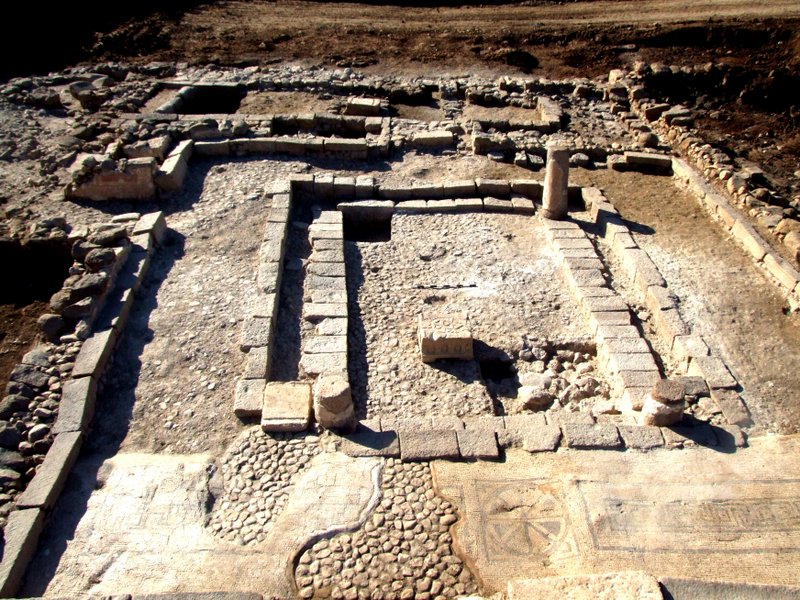 The excavated 1st century synagogue. Courtesy Israel Antiquities Authority and Magdala Center.
The excavated 1st century synagogue. Courtesy Israel Antiquities Authority and Magdala Center.
________________________________________________________
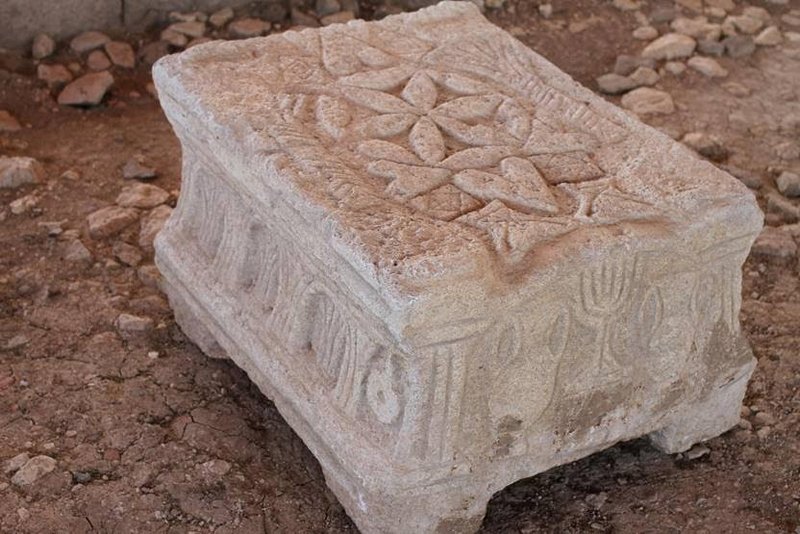 The “Magdala Stone”, found within the synagogue during the excavation. Courtesy Magdala Center.
The “Magdala Stone”, found within the synagogue during the excavation. Courtesy Magdala Center.
_______________________________________________________
But the major discoveries being made at Magdala didn’t stop with the synagogue. The excavations were joined in 2010 by Mexican archaeologist Dr. Marcela Zapata-Meza and a team from Universidad Anáhuac México Sur. This team uncovered three unique Jewish ritual baths, or mikva’ot, southeast of the synagogue area. Unplastered, these baths, designed for ritual purification, were constructed down to the level of the water table, which was relatively high due to their proximity to the Lake. Unlike most other mikva’ot, says Jennifer Ristine of the Magdala Center, “they were left unplastered to let ground water infiltrate easily through the joints between the stones.” Moreover, Ristine asserts, “no mikva’ot dating to the late Second Temple period are reported within the excavated areas of Jewish towns and villages located around and close to the Sea of Galilee, such as Tiberias, Hamat-Tiberias, and Capernaum. The three mikva’ot from Magdala give new insight into Jewish life in the Second Temple period.”*
In addition to the synagogue, decorated stone, and mikva’ot, archaeologists uncovered evidence of a marketplace with an advanced plumbing system, a central paved street, and a wharf.
___________________________________________
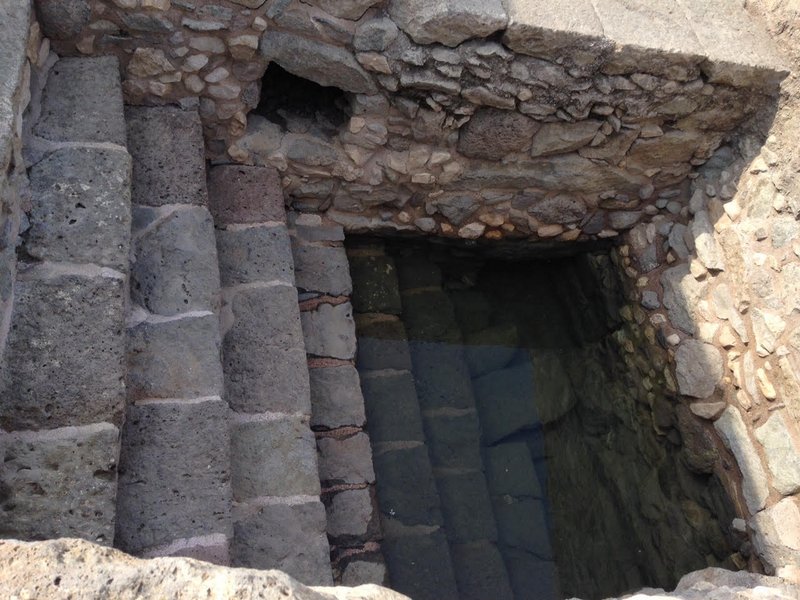 One of the ritual baths, or mikva’ot, uncovered during the excavations. Courtesy Magdala Center.
One of the ritual baths, or mikva’ot, uncovered during the excavations. Courtesy Magdala Center.
___________________________________________
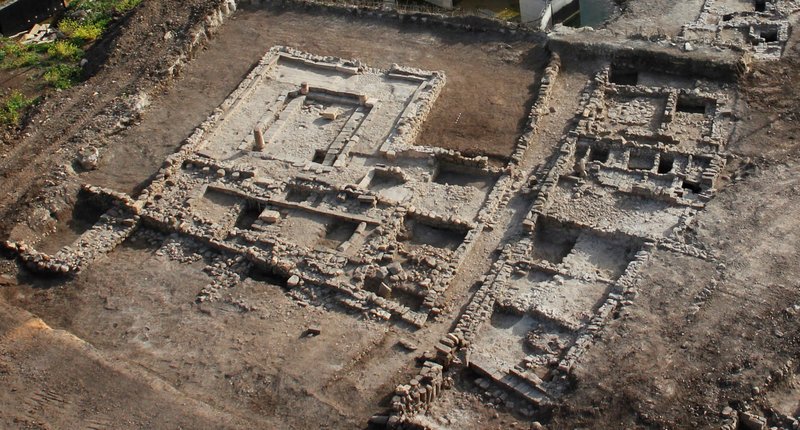 Aerial shot showing the excavated synagogue (left) and adjacent marketplace. Credit David Silverman and Yuval Nadel, courtesy Magdala Center.
Aerial shot showing the excavated synagogue (left) and adjacent marketplace. Credit David Silverman and Yuval Nadel, courtesy Magdala Center.
____________________________________________________
Archaeologists hope to uncover additional structures and artifacts that will shed light on the lives of the people who lived at the site during the tumultuous times of Jesus and the Jewish Revolt. “The excavations at Magdala are part of an international project that works with an interdisciplinary perspective and an extensive excavation strategy,” says Ristine. “Since 2009 we have excavated 4,850 sq. m in six excavation areas. We expect that this archaeological season, 2015, will reveal more information that will help us to better understand the ritual context of the mikva’ot with the synagogue and also help us compare the historical sources like Flavious Josephus with the archaeological evidence.”*
More about the discoveries at Magdala will be published in the Fall 2015 issue of Popular Archaeology Magazine.
____________________________________________________
(1) Biblical Magdala, Rejuvenated, by Sarah Levi, Jerusalem Post, July 17, 2015.
*Discoveries at Magdala: A First Century Community on the Banks of the Sea of Galilee, Popular Archaeology Magazine, Fall 2015.
Additional information about the Magdala excavations can be found at the project website and at the Magdala Center website.
___________________________________________________
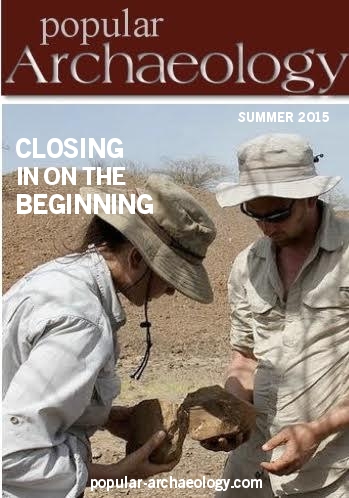 Read more in-depth articles about archaeology with a premium subscription to Popular Archaeology Magazine.
Read more in-depth articles about archaeology with a premium subscription to Popular Archaeology Magazine.
In addition, the latest Popular Archaeology ebook is now available.
______________________________________________
Travel and learn with Far Horizons.
____________________________________________
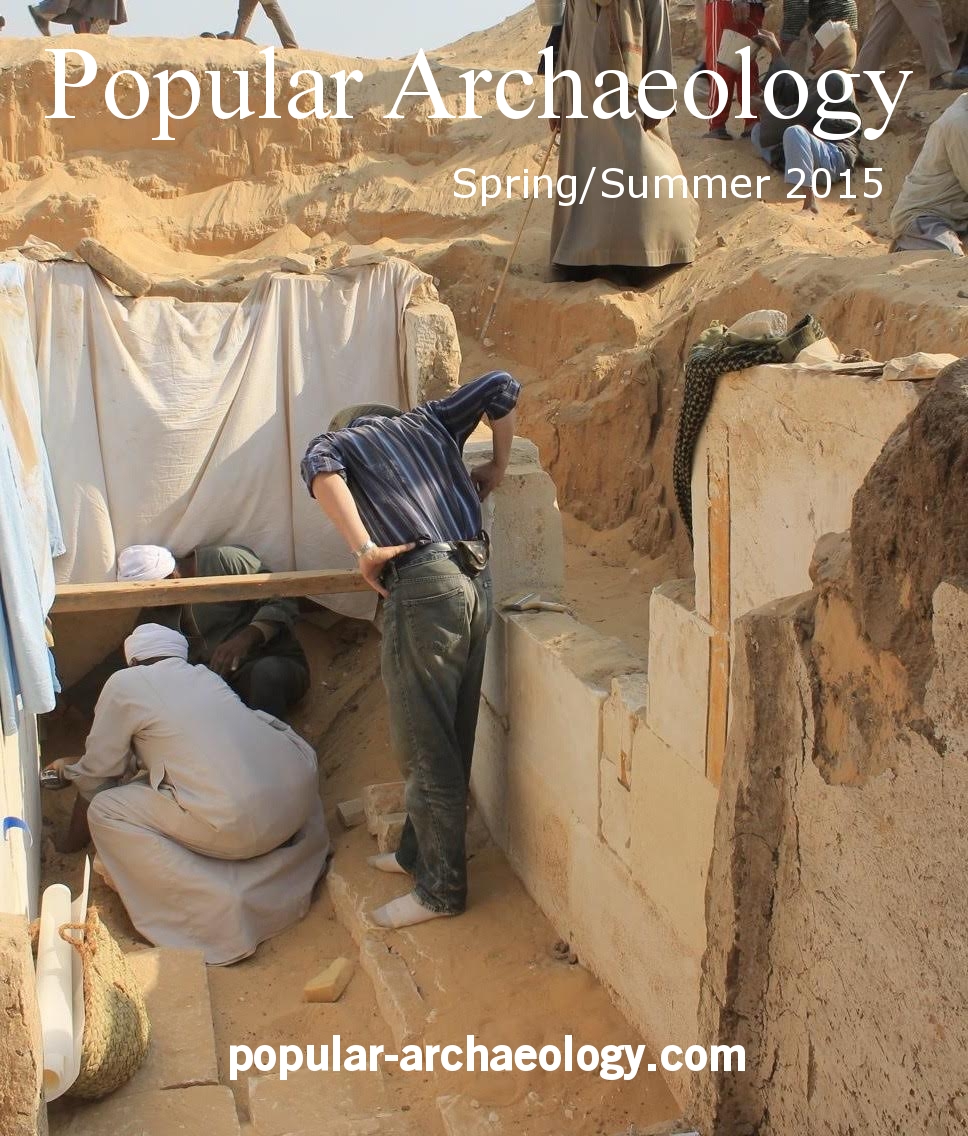 This richly illustrated ebook version of a recent Popular Archaeology issue includes the following stories: The discovery of the tomb of a previously unknown pharaoh that is shedding light on a lost ancient Egyptian dynasty; how genetics is revolutionizing what we know about human evolution and our prehistoric past; one scholar’s controversial ‘New Chronology’ and how it supports the historicity of the biblical Exodus; how archaeologists are unearthing new history in Williamsburg, Virginia, a seat of British colonial power in 18th century America; the discovery of the remains of a major Roman legionary base in Israel; the unearthing of an ancient Judean fortified settlement in the borderlands between the biblical kingdoms of ancient Judah and the Philistines; and how archaeologists are uncovering evidence of what may have been an important administrative center of Judah during the 8th century BCE. Now available from Amazon.com!
This richly illustrated ebook version of a recent Popular Archaeology issue includes the following stories: The discovery of the tomb of a previously unknown pharaoh that is shedding light on a lost ancient Egyptian dynasty; how genetics is revolutionizing what we know about human evolution and our prehistoric past; one scholar’s controversial ‘New Chronology’ and how it supports the historicity of the biblical Exodus; how archaeologists are unearthing new history in Williamsburg, Virginia, a seat of British colonial power in 18th century America; the discovery of the remains of a major Roman legionary base in Israel; the unearthing of an ancient Judean fortified settlement in the borderlands between the biblical kingdoms of ancient Judah and the Philistines; and how archaeologists are uncovering evidence of what may have been an important administrative center of Judah during the 8th century BCE. Now available from Amazon.com!
____________________________________________







